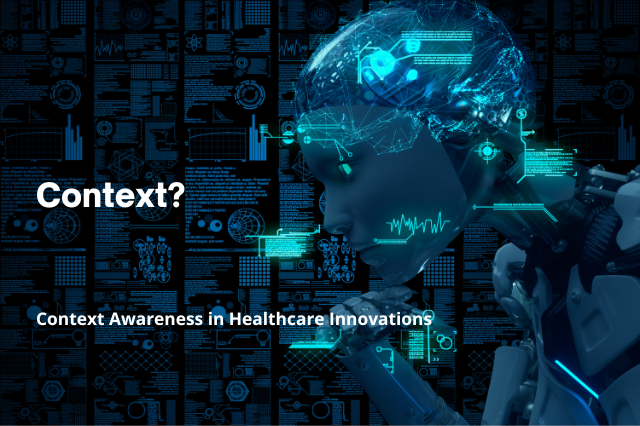Context Awareness in Healthcare Innovations
Nurse Developer Column
By Raymund John Ang, RN, MAN, PhD St
Raymund is currently a PhD student at the Holy Angel University (Philippines), and works as a clinical analyst in Pennsylvania, USA. He is the project lead of the Open Nursing Information System (Open-NIS) Project
Citation: Ang, R. J. (2023). Context Awareness in Healthcare Innovations. Nurse Developer Column. Canadian Journal of Nursing Informatics, 18(1). https://cjni.net/journal/?p=10858

In the context of human conversation as a mode of communication, responses are usually in the form of a sentence, a paragraph, a single word or phrase, or even silence. To maintain efficient exchange of information, the participants in the communication process should be aware of the context in which the responses are made. It can be through analyzing the letters or group of letters and characters, or from a previous communication loop, or a question for which the response was made. A good example is when the response is in the affirmative (Yes) or the negative (No). Receiving a response of either a Yes or a No, without any proper context, will bring about confusion to the recipient of the message. This is true not only in human-to-human interaction, but also when communicating with conversational agents or chatbots, particularly those designed with healthcare applications in mind.
It is possible for the context to be found in the corpus of the message itself. In this case, textual analysis or natural language processing may be applied to derive the context of the message, and a suitable response can be initiated through algorithms embedded within these conversational agents. However, in circumstances where a patient will respond to a close-ended question with a Yes or a No, there is no context within the message itself where the affirmation or negation can be applied to since the message is just composed of a single word. This highlights the deficiency of artificial intelligence (AI) algorithms if the corpus of the response or message string is relied upon to contain the context of conversation. To address this aspect of AI systems design, context can be saved through a storage mechanism, such as in memory, and transmitted with the textual response. With this, the recipient will be able to appreciate the single-word response, particularly when applying it to the design of healthcare chatbots.
AI systems engineers, as well as the nurses or healthcare professionals who are involved in the design phase of these systems, should apply the basic concept of information being saved into memory (or other forms of information storage) when providing proper context to conversational agents – taking into consideration that single-word messages are possible in healthcare-related conversations. The combination of well implemented AI algorithms to derive context, and a storage mechanism to store context can hopefully lead towards the development of interactional healthcare technologies that are not just technologically competent but caring and meaningful as well.
References
Allen, V., Marshall, I., Davis, K., Howe, R., & Wells, K. (2016). Cambridge Technicals Level 3 Digital Media. Hodder Education.
Ang, R. J. (2022). Nursing informatics innovation in the context of technological competency. Proceedings of the 4th International Conference on Technological Competency as Caring in Nursing and Health Sciences 2022, Japan (Online), https://tccn4.com/wp-content/uploads/2016/05/4th-TCCN-Proceedings.pdf
Thompson, S. J. (2021). Machine law, ethics, and morality in the age of artificial intelligence. IGI Global.






